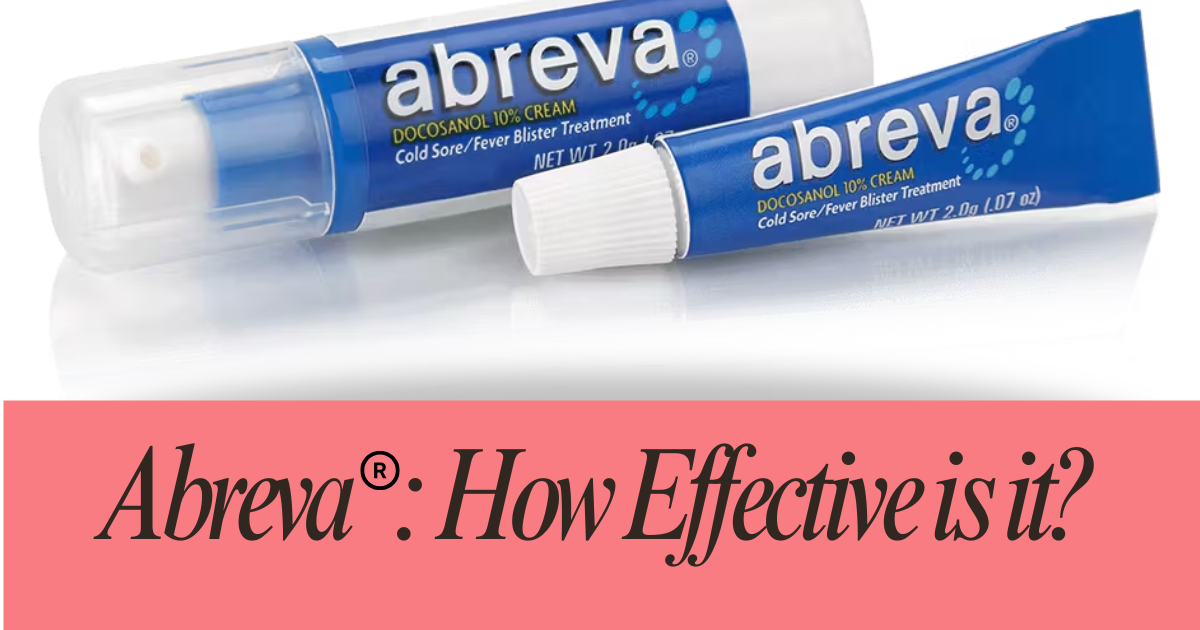
If you’re one of the millions seeking fast relief from cold sores, you’ve probably heard of Abreva®. Abreva (Docosanol 10%) is the most popular over-the-counter treatment, holding around 70% of the market share for cold sore remedies. But with great advancements in the field, is it still the most effective choice?
What Is Abreva®?
Abreva® contains Docosanol (an active ingredient approved by FDA 25 years ago) that isn’t an antiviral. Instead of targeting the herpes simplex virus (HSV-1) directly, Docosanol blocks the virus from entering cells, potentially reducing the duration of a cold sore outbreak. However, it’s important to examine how well this approach truly works in practice
Minimal Impact: Reduces Healing Time by Only Half a Day
Abreva®’s advertisements state that it “can heal a cold sore in as few as 2½ days** if used at the first sign of an outbreak,” with a median healing time of 4.1 days. However, it’s important to read the fine print. According to clinical studies, only 25% of users achieved healing in 2½ days, while 25% of those using a placebo also healed within 2.7 days. The median healing time for those on placebo was 4.7 days – just 0.6 days (about half a day) longer than those using Abreva®.
For the most people, Abreva® shortens cold sore healing time by only about half a day, making a minor difference within the typical 5-7 day duration of a cold sore outbreak.
Abreva®’s Clinical Trials: Mixed Results
The FDA review of Abreva® included multiple studies and ultimately, two larger studies were pivotal in securing FDA approval. One of these studies showed that the improvement in healing time was not enough to be statistically significant, but the other was, and the pooled result was also insignificant. Smaller trials also failed to show consistent improvements, and due to these mixed results, the FDA’s Medical Reviewer initially recommended against approval, citing limited evidence of efficacy. However, the final approval was granted based on the potential value that even a modest reduction in healing time could have for cold sore sufferers.
Newer Treatments on the Horizon
Since Docosanol’s approval over two decades ago, newer treatments like Tranexamic acid have emerged with promising results. Tranexamic acid, which has shown effectiveness in rapid cold sore care, may offer more substantial relief for those who seek faster and more noticeable results than what Abreva® provides.
Final Thoughts: Abreva®’s Role in Cold Sore Management
Abreva® has remained a well-known option in cold sore treatment, yet its benefits are often modest and, for many, barely noticeable. Though it might slightly shorten the duration of a cold sore, newer treatments developed since Docosanol’s approval around 25 years ago may offer more effective relief including those with a stronger evidence base for reducing the duration and intensity of cold sores. If you’ve tried Abreva®, consider sharing your experiences to help others make a more informed choice!
Reference
U.S. Food and Drug Administration. (2000). NDA 20-941: Abreva Medical Review, Part 2. See especially Tables 15, 28, 38 & Section 12 Recommendations.
